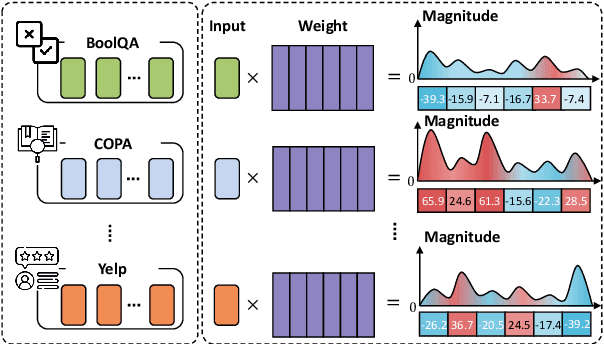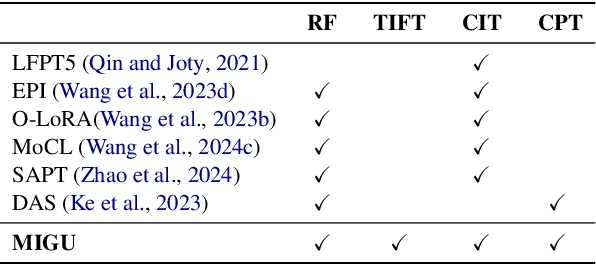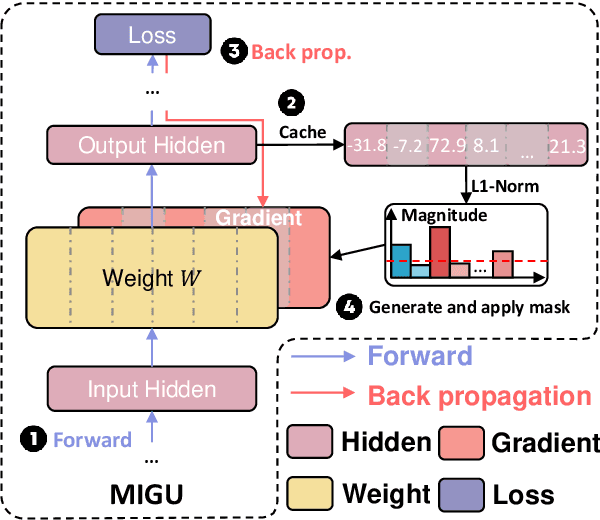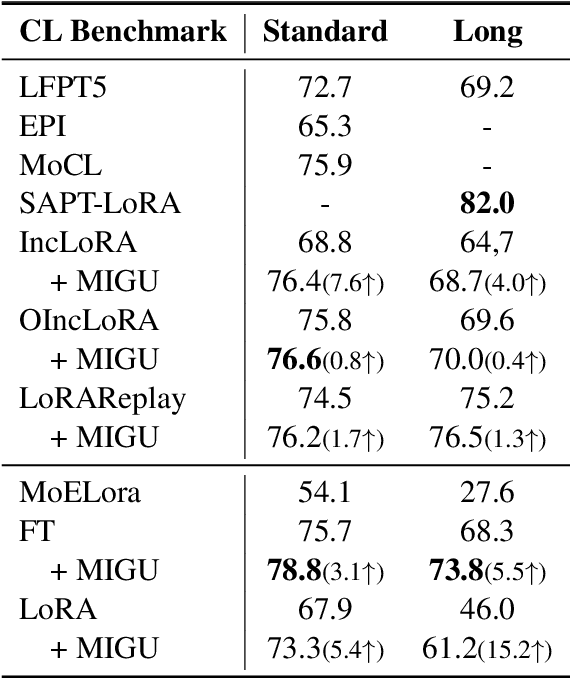Reynold Cheng
On Aggregation Queries over Predicted Nearest Neighbors
Feb 26, 2025Abstract:We introduce Aggregation Queries over Nearest Neighbors (AQNNs), a novel type of aggregation queries over the predicted neighborhood of a designated object. AQNNs are prevalent in modern applications where, for instance, a medical professional may want to compute "the average systolic blood pressure of patients whose predicted condition is similar to a given insomnia patient". Since prediction typically involves an expensive deep learning model or a human expert, we formulate query processing as the problem of returning an approximate aggregate by combining an expensive oracle and a cheaper model (e.g, a simple ML model) to compute the predictions. We design the Sampler with Precision-Recall in Target (SPRinT) framework for answering AQNNs. SPRinT consists of sampling, nearest neighbor refinement, and aggregation, and is tailored for various aggregation functions. It enjoys provable theoretical guarantees, including bounds on sample size and on error in approximate aggregates. Our extensive experiments on medical, e-commerce, and video datasets demonstrate that SPRinT consistently achieves the lowest aggregation error with minimal computation cost compared to its baselines. Scalability results show that SPRinT's execution time and aggregation error remain stable as the dataset size increases, confirming its suitability for large-scale applications.
Towards Understanding Fine-Tuning Mechanisms of LLMs via Circuit Analysis
Feb 17, 2025Abstract:Fine-tuning significantly improves the performance of Large Language Models (LLMs), yet its underlying mechanisms remain poorly understood. This paper aims to provide an in-depth interpretation of the fine-tuning process through circuit analysis, a popular tool in Mechanistic Interpretability (MI). Unlike previous studies \cite{prakash2024finetuningenhancesexistingmechanisms,chhabra2024neuroplasticity} that focus on tasks where pre-trained models already perform well, we develop a set of mathematical tasks where fine-tuning yields substantial performance gains, which are closer to the practical setting. In our experiments, we identify circuits at various checkpoints during fine-tuning and examine the interplay between circuit analysis, fine-tuning methods, and task complexities. First, we find that while circuits maintain high node similarity before and after fine-tuning, their edges undergo significant changes, which is in contrast to the previous work \cite{prakash2024finetuningenhancesexistingmechanisms,chhabra2024neuroplasticity} that show circuits only add some additional components after fine-tuning. Based on these observations, we develop a circuit-aware Low-Rank Adaptation (LoRA) method, which assigns ranks to layers based on edge changes in the circuits. Experimental results demonstrate that our circuit-based LoRA algorithm achieves an average performance improvement of 2.46\% over standard LoRA with similar parameter sizes. Furthermore, we explore how combining circuits from subtasks can enhance fine-tuning in compositional tasks, providing new insights into the design of such tasks and deepening the understanding of circuit dynamics and fine-tuning mechanisms.
Unlocking Continual Learning Abilities in Language Models
Jun 25, 2024



Abstract:Language models (LMs) exhibit impressive performance and generalization capabilities. However, LMs struggle with the persistent challenge of catastrophic forgetting, which undermines their long-term sustainability in continual learning (CL). Existing approaches usually address the issue by incorporating old task data or task-wise inductive bias into LMs. However, old data and accurate task information are often unavailable or costly to collect, hindering the availability of current CL approaches for LMs. To address this limitation, we introduce $\textbf{MIGU}$ ($\textbf{M}$agn$\textbf{I}$tude-based $\textbf{G}$radient $\textbf{U}$pdating for continual learning), a rehearsal-free and task-label-free method that only updates the model parameters with large magnitudes of output in LMs' linear layers. MIGU is based on our observation that the L1-normalized magnitude distribution of the output in LMs' linear layers is different when the LM models deal with different task data. By imposing this simple constraint on the gradient update process, we can leverage the inherent behaviors of LMs, thereby unlocking their innate CL abilities. Our experiments demonstrate that MIGU is universally applicable to all three LM architectures (T5, RoBERTa, and Llama2), delivering state-of-the-art or on-par performance across continual finetuning and continual pre-training settings on four CL benchmarks. For example, MIGU brings a 15.2% average accuracy improvement over conventional parameter-efficient finetuning baselines in a 15-task CL benchmark. MIGU can also seamlessly integrate with all three existing CL types to further enhance performance. Code is available at \href{https://github.com/wenyudu/MIGU}{this https URL}.
Before Generation, Align it! A Novel and Effective Strategy for Mitigating Hallucinations in Text-to-SQL Generation
May 24, 2024Abstract:Large Language Models (LLMs) driven by In-Context Learning (ICL) have significantly improved the performance of text-to-SQL. Previous methods generally employ a two-stage reasoning framework, namely 1) schema linking and 2) logical synthesis, making the framework not only effective but also interpretable. Despite these advancements, the inherent bad nature of the generalization of LLMs often results in hallucinations, which limits the full potential of LLMs. In this work, we first identify and categorize the common types of hallucinations at each stage in text-to-SQL. We then introduce a novel strategy, Task Alignment (TA), designed to mitigate hallucinations at each stage. TA encourages LLMs to take advantage of experiences from similar tasks rather than starting the tasks from scratch. This can help LLMs reduce the burden of generalization, thereby mitigating hallucinations effectively. We further propose TA-SQL, a text-to-SQL framework based on this strategy. The experimental results and comprehensive analysis demonstrate the effectiveness and robustness of our framework. Specifically, it enhances the performance of the GPT-4 baseline by 21.23% relatively on BIRD dev and it yields significant improvements across six models and four mainstream, complex text-to-SQL benchmarks.
Stacking Your Transformers: A Closer Look at Model Growth for Efficient LLM Pre-Training
May 24, 2024Abstract:LLMs are computationally expensive to pre-train due to their large scale. Model growth emerges as a promising approach by leveraging smaller models to accelerate the training of larger ones. However, the viability of these model growth methods in efficient LLM pre-training remains underexplored. This work identifies three critical $\underline{\textit{O}}$bstacles: ($\textit{O}$1) lack of comprehensive evaluation, ($\textit{O}$2) untested viability for scaling, and ($\textit{O}$3) lack of empirical guidelines. To tackle $\textit{O}$1, we summarize existing approaches into four atomic growth operators and systematically evaluate them in a standardized LLM pre-training setting. Our findings reveal that a depthwise stacking operator, called $G_{\text{stack}}$, exhibits remarkable acceleration in training, leading to decreased loss and improved overall performance on eight standard NLP benchmarks compared to strong baselines. Motivated by these promising results, we conduct extensive experiments to delve deeper into $G_{\text{stack}}$ to address $\textit{O}$2 and $\textit{O}$3. For $\textit{O}$2 (untested scalability), our study shows that $G_{\text{stack}}$ is scalable and consistently performs well, with experiments up to 7B LLMs after growth and pre-training LLMs with 750B tokens. For example, compared to a conventionally trained 7B model using 300B tokens, our $G_{\text{stack}}$ model converges to the same loss with 194B tokens, resulting in a 54.6\% speedup. We further address $\textit{O}$3 (lack of empirical guidelines) by formalizing guidelines to determine growth timing and growth factor for $G_{\text{stack}}$, making it practical in general LLM pre-training. We also provide in-depth discussions and comprehensive ablation studies of $G_{\text{stack}}$. Our code and pre-trained model are available at $\href{https://llm-stacking.github.io/}{https://llm-stacking.github.io/}$.
Multi-order Graph Clustering with Adaptive Node-level Weight Learning
May 20, 2024



Abstract:Current graph clustering methods emphasize individual node and edge con nections, while ignoring higher-order organization at the level of motif. Re cently, higher-order graph clustering approaches have been designed by motif based hypergraphs. However, these approaches often suffer from hypergraph fragmentation issue seriously, which degrades the clustering performance greatly. Moreover, real-world graphs usually contain diverse motifs, with nodes participating in multiple motifs. A key challenge is how to achieve precise clustering results by integrating information from multiple motifs at the node level. In this paper, we propose a multi-order graph clustering model (MOGC) to integrate multiple higher-order structures and edge connections at node level. MOGC employs an adaptive weight learning mechanism to au tomatically adjust the contributions of different motifs for each node. This not only tackles hypergraph fragmentation issue but enhances clustering accuracy. MOGC is efficiently solved by an alternating minimization algo rithm. Experiments on seven real-world datasets illustrate the effectiveness of MOGC.
A Sampling-based Framework for Hypothesis Testing on Large Attributed Graphs
Mar 20, 2024



Abstract:Hypothesis testing is a statistical method used to draw conclusions about populations from sample data, typically represented in tables. With the prevalence of graph representations in real-life applications, hypothesis testing in graphs is gaining importance. In this work, we formalize node, edge, and path hypotheses in attributed graphs. We develop a sampling-based hypothesis testing framework, which can accommodate existing hypothesis-agnostic graph sampling methods. To achieve accurate and efficient sampling, we then propose a Path-Hypothesis-Aware SamplEr, PHASE, an m- dimensional random walk that accounts for the paths specified in a hypothesis. We further optimize its time efficiency and propose PHASEopt. Experiments on real datasets demonstrate the ability of our framework to leverage common graph sampling methods for hypothesis testing, and the superiority of hypothesis-aware sampling in terms of accuracy and time efficiency.
Tapilot-Crossing: Benchmarking and Evolving LLMs Towards Interactive Data Analysis Agents
Mar 08, 2024



Abstract:Interactive Data Analysis, the collaboration between humans and LLM agents, enables real-time data exploration for informed decision-making. The challenges and costs of collecting realistic interactive logs for data analysis hinder the quantitative evaluation of Large Language Model (LLM) agents in this task. To mitigate this issue, we introduce Tapilot-Crossing, a new benchmark to evaluate LLM agents on interactive data analysis. Tapilot-Crossing contains 1024 interactions, covering 4 practical scenarios: Normal, Action, Private, and Private Action. Notably, Tapilot-Crossing is constructed by an economical multi-agent environment, Decision Company, with few human efforts. We evaluate popular and advanced LLM agents in Tapilot-Crossing, which underscores the challenges of interactive data analysis. Furthermore, we propose Adaptive Interaction Reflection (AIR), a self-generated reflection strategy that guides LLM agents to learn from successful history. Experiments demonstrate that Air can evolve LLMs into effective interactive data analysis agents, achieving a relative performance improvement of up to 44.5%.
A Survey on Knowledge Distillation of Large Language Models
Feb 23, 2024Abstract:In the era of Large Language Models (LLMs), Knowledge Distillation (KD) emerges as a pivotal methodology for transferring advanced capabilities from leading proprietary LLMs, such as GPT-4, to their open-source counterparts like LLaMA and Mistral. Additionally, as open-source LLMs flourish, KD plays a crucial role in both compressing these models, and facilitating their self-improvement by employing themselves as teachers. This paper presents a comprehensive survey of KD's role within the realm of LLM, highlighting its critical function in imparting advanced knowledge to smaller models and its utility in model compression and self-improvement. Our survey is meticulously structured around three foundational pillars: \textit{algorithm}, \textit{skill}, and \textit{verticalization} -- providing a comprehensive examination of KD mechanisms, the enhancement of specific cognitive abilities, and their practical implications across diverse fields. Crucially, the survey navigates the intricate interplay between data augmentation (DA) and KD, illustrating how DA emerges as a powerful paradigm within the KD framework to bolster LLMs' performance. By leveraging DA to generate context-rich, skill-specific training data, KD transcends traditional boundaries, enabling open-source models to approximate the contextual adeptness, ethical alignment, and deep semantic insights characteristic of their proprietary counterparts. This work aims to provide an insightful guide for researchers and practitioners, offering a detailed overview of current methodologies in KD and proposing future research directions. Importantly, we firmly advocate for compliance with the legal terms that regulate the use of LLMs, ensuring ethical and lawful application of KD of LLMs. An associated Github repository is available at https://github.com/Tebmer/Awesome-Knowledge-Distillation-of-LLMs.
Debiasing Recommendation with Personal Popularity
Feb 21, 2024



Abstract:Global popularity (GP) bias is the phenomenon that popular items are recommended much more frequently than they should be, which goes against the goal of providing personalized recommendations and harms user experience and recommendation accuracy. Many methods have been proposed to reduce GP bias but they fail to notice the fundamental problem of GP, i.e., it considers popularity from a \textit{global} perspective of \textit{all users} and uses a single set of popular items, and thus cannot capture the interests of individual users. As such, we propose a user-aware version of item popularity named \textit{personal popularity} (PP), which identifies different popular items for each user by considering the users that share similar interests. As PP models the preferences of individual users, it naturally helps to produce personalized recommendations and mitigate GP bias. To integrate PP into recommendation, we design a general \textit{personal popularity aware counterfactual} (PPAC) framework, which adapts easily to existing recommendation models. In particular, PPAC recognizes that PP and GP have both direct and indirect effects on recommendations and controls direct effects with counterfactual inference techniques for unbiased recommendations. All codes and datasets are available at \url{https://github.com/Stevenn9981/PPAC}.
 Add to Chrome
Add to Chrome Add to Firefox
Add to Firefox Add to Edge
Add to Edge